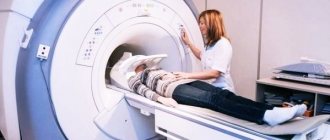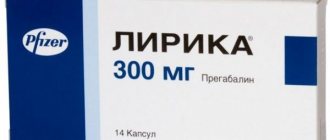Doctors say one of the main reasons for the formation of Morton's neuroma is wearing improperly selected shoes. Most often, neuroma develops in those people who wear shoes with heels, narrow toes, and with the toes turned up. If you do not have a neuroma, avoid wearing shoes with these characteristics to avoid developing one. If the disease cannot be avoided, orthopedic treatment can significantly alleviate its course and help you get rid of pain and discomfort.
What is Morton's neuroma and how does it occur?
Morton's neuroma occurs when a person has progressive transverse flatfoot over a long period of time. Tight shoes and high heels aggravate the problem and accelerate the development of the disease. In shoes with heels, the toes are “crooked”: they slip forward and bend, and the transverse arch of the foot is “flattened” under the weight of the body.
In Morton's neuroma, the nerve sac between the third and fourth joints of the toes becomes inflamed. It happens like this: the transverse arch, which should rest on the heads of the 1st and 5th joints of the fingers, loses its arch shape and the entire load is transferred to the joints of the 3rd and 4th fingers. The foot “spreads” and the nerve endings remain pinched at the tops of the joints. Inflammation begins.
At first, pain occurs on the side of the sole of the foot, especially when stepping on it; when the neuroma progresses, the pain becomes constant. If the disease gets worse, you will have to resort to surgery to cut off this section of the nerve, which will cause the skin in this area to lose sensitivity. To avoid this, use a set for the prevention and treatment of Morton's Neuroma, which consists of three products.
Shoe selection
To choose the most comfortable shoes that will not aggravate the course of the neuroma, do the following. Get a pair with removable insoles, remove the insoles, and stand on them. If your feet are wider than the insoles, this pair is narrow for you. The shoes will put pressure on your foot, causing pain. And if you plan to additionally use orthopedic insoles, then you will need even wider shoes.
Special orthopedic shoes (sandals, shoes, boots) are rarely used in the conservative treatment of Morton's neuroma. Only after surgery to remove a neuroma, the doctor recommends wearing post-operative shoes with rigid soles or with forefoot unloading for several weeks after surgery.
Pads with adjustable elastic bands, 1 pair
These pads are worn separately from the rest of the set. They can be worn with or without shoes, because the elastic, adjustable strap holds the product well on three toes at once. The products have a triple therapeutic effect for Morton's neuroma:
- Thickened pads return the arch shape to the transverse arch of the foot;
- Elastic material reduces stress on the forefoot;
- The rubberized tape separates the fingers and moves apart the pinched joints.
These products are made from a pleasant-to-touch material that absorbs moisture well and allows the foot to “breathe.”
Metatarsal pads (liners)
They are placed under the ball of the foot and their main purpose is to spread the metatarsal bones apart and relieve pressure on the injured nerve. Another name for orthopedic inserts is transverse arch correctors.
Metatarsal pads can be purchased separately, or insoles can be purchased with them. The second option is often preferable because, while in the insole, the pad will be securely fixed under the area of the foot that it is intended to affect. However, today you can find fixed versions of the pads - with rings made of elastic fabric that are worn on the toes.
Approximate schedule for wearing items from the set
Silicone correctors and drop-shaped inserts can be worn together, alternating with the pad, or you can wear all products separately. We offer an approximate schedule for wearing the components of the set, which you can adjust to suit your needs for convenience.
These products can be combined with different shoes. The pads fit into roomy shoes with a wide toe, silicone separators fit into casual and sports shoes, and adhesive-based inserts are ideal for dress shoes. At home, you can wear silicone correctors and a pad with socks, slippers, and bare feet.
Diagnostics
In order to diagnose intermetatarsal neuroma, the necessary measures and clinical examinations of the patient are performed. As a rule, first of all, the doctor finds out the anamnestic data, performs an examination of the lower extremities and palpation.
The fundamental sign of the pathology is an increase in pain symptoms in the metatarsus when the foot is compressed, especially when the pain is localized in the interdigital space.
We also recommend: Pain in the metatarsal part of the foot
In addition, diagnostic measures include a number of the following manipulations:
- conducting a computed tomogram, which allows you to take a layer-by-layer image of the affected area;
- performing an x-ray examination of the foot;
- Ultrasound examination of the foot is considered the most accurate and informative diagnostic method, which is used by both adult patients and children;
- conducting MRI, when using nuclear magnetic resonance it is possible to obtain the most accurate image of the affected organ.
If necessary, it is possible to conduct research using auxiliary methods, and only after obtaining the necessary data is it recommended to prescribe therapeutic measures.
Treatment options for Morton's neuroma
After carrying out all the necessary clinical procedures, the specialist draws up a treatment plan. First of all, treatment begins with replacing all shoes with something more comfortable, looser and not capable of causing overload of the foot. It is recommended to use special orthopedic insoles, metatarsal pads and special separators designed for the toes. In addition, people suffering from the described anomaly are advised to spend less time standing and reduce their walking time.
In order to get rid of painful sensations, doctors prescribe medications aimed at providing an anti-inflammatory effect. In addition, patients are given injections of anesthetics into the interdigital areas and therapeutic blockades in the area of the metatarsophalangeal joint. Physiotherapy is quite popular:
Magnet therapy sessions.- Acupuncture.
- Electrophoresis of the drug plan.
- Shock wave techniques.
If the methods described above are insufficiently effective, medical staff resort to surgical interventions. There are two types of surgical procedure:
- Transverse ligament dissection is an outpatient form of surgery that lasts less than ten minutes. After a few hours, the patient can move freely and lean on his leg without pain. In some cases, recurrent lesions may occur.
- Excision of a neuroma is the resection of a deformed nerve. Can be performed in an outpatient clinic. After the end of the event, the person remains numb for a short time in the area where the operation was performed.
Prevention
How to prevent Morton's disease? First of all, choose the right shoes that fit properly, do not compress the arch of the foot, have a stable heel and a comfortable last. If for some reason it is impossible to give up heels, a woman should limit the time she walks in them, and in the evening do foot baths or place them on a slight elevation.
People with flat feet have a significant chance of developing neuroma. Therefore, regardless of age, they are recommended to wear orthopedic insoles or special shoes.
An equally important factor is compliance with the motor regime. Avoid standing for long periods of time or walking for long periods of time. You should always take breaks to reduce the stress on your foot and give it a chance to rest. If alarming symptoms appear, you should immediately consult a doctor. Conservative treatment at an early stage is most effective and will avoid surgery.
How is diagnosis done?
Suitable for most patients, doctors work in the field of neurology, orthopedics and traumatology. To make a conclusion, the specialist will need to obtain reliable information about clinical complaints. One of the obvious symptoms of the presence of such an anomaly is a positive response during compression of the foot in the frontal position. The patient begins to experience an increase in pain and its transmission to the fingers that are affected by Morton's disease. In some situations, experts will write referrals for an examination using an X-ray device or CT scanner.
Doctors note that often such methods of checking the patient’s body do not bring results, since they do not provide information about the presence of a neuroma. In the case of an MRI scan, the disease presented appears as an odd region highlighting a high degree of signal. Such disease modeling may give false indications.
The most suitable way to check a patient in modern medicine is the use of an ultrasound machine. Instrumental diagnostic technologies also provide information about the presence of damaged areas, malignant and benign formations, as well as hematomas.
Briefly about Morton's disease
The described abnormal process often has a one-sided form of damage, which accumulates in the third space (less often in the second, and in more rare situations in the first and fourth). Females are most susceptible to this disease, since most often women are able to wear uncomfortable shoes for a long time and not pay attention to the consequences. The patient’s condition is monitored by experts from two areas – neurology and traumatology-orthopedics. The presented disease has many names: neuroma, metatarsalgia, perineural fibrosis, etc.
How does it manifest itself?
This disease provokes pain in the distal zones of the foot, in particular in the 3rd-4th toe. The manifestation of pain has a burning nature, and at some points it is distinguished by certain lumbago. Many patients report to their doctor about unpleasant discomfort and a constant feeling of a foreign object inside the shoe, although it is not observed there. At the first stage of pathology formation, pain is quite closely associated with wearing shoes. People suffering from the described illness say that they experience positive emotions after its removal. Over time, various problems may disappear and then arise again.
In the event of a complete refusal of qualified medical care, the neuroma begins to develop, which leads to an ongoing pain syndrome, which increases when wearing absolutely any products, and when getting rid of them, the level only decreases. In the following days, a distinct numbness appears in the limbs. Often, most patients visit a specialist’s office already at critical stages of the disease, when standard treatment does not help to get rid of it.
Manifestation of signs of Morton's neuroma
The main symptoms of Morton's neuroma:
- foot pain;
- foreign body sensation;
- numbness of fingers.
In the initial stage of the disease, the patient is bothered by pain, but the tumor is not felt by the patient and does not manifest itself. The patient traces the connection between wearing tight shoes and the occurrence of painful sensations, and by removing them, he receives relief from pain and significant relief. The pain goes away, but returns after some time.
At this stage, the patient sees no reason to see a doctor, since the symptoms disappear or significantly decrease. Later, when the disease enters an advanced stage, the pain is constant, can increase and become more intense. Even while lying down or being barefoot, the patient will have sensations similar to those experienced when walking on sharp pebbles. The process of exacerbation occurs in waves, when there is an alternation of periods of rest and intense pain.
As the disease progresses, it becomes increasingly difficult for the patient to remain on his feet for a long time. If you take off your shoes and massage your feet in case of severe pain, the pain will decrease and may disappear completely. But this is only a temporary measure. The patient comes to see the doctor in a state where he has tried all the ways to get rid of the pain on his own.
The pain is concentrated in the space between the toes; the patient often complains of numbness, tingling in the fingers, and the presence of a “non-existent pebble” in the shoe. An already formed neuroma can be easily felt between the fingers in the form of a small compaction between the metatarsal bones.











